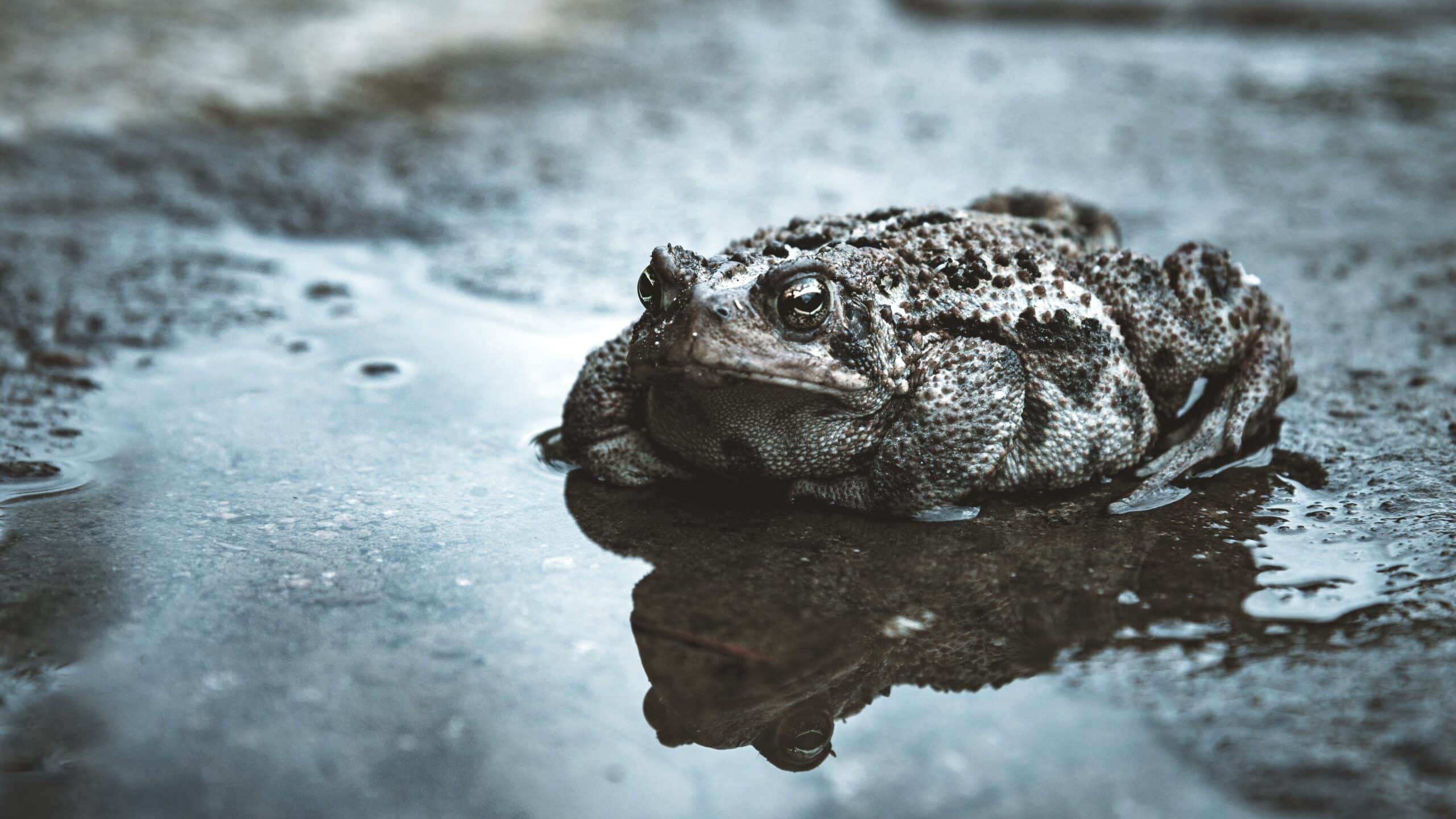What Amphibians Can Tell Us About Water Quality

Whether it occurs through the discharge of nutrients from agricultural operations into local streams or the discardment of plastic into the ocean, water pollution can negatively impact both human and environmental health. In fact, diseases caused by water pollution kill more people every year than all forms of violence — including war.
Scientists can use a variety of tools and methods to protect aquatic environments from pollution. That includes monitoring animals that belong to an “indicator species.” The presence or absence of these animals can tell scientists a lot about changes to the environmental conditions in which they live.
Amphibians, for example, can help scientists determine the impact of pollution on waterways. Many of these cold-blooded vertebrates — frogs, toads, salamanders and newts — begin their life in the water as larvae and eventually move onto land, though some species spend their entire lives in the water. Most amphibians also breathe through their skin to a certain degree, making them especially vulnerable to water pollution.
“Most of the problems we see in amphibians are due to their skin being more permeable than other vertebrates. Some amphibians lack lungs all together and fully depend on cutaneous respiration. So water pollution can be directly toxic to amphibians,” said Ivana Mali, The Ecology Wildlife Foundation Distinguished Scholar for Conservation Biology at NC State. “This is one of the reasons we monitor them as environmental health indicators.”
Mali, whose research examines how reptiles and amphibians respond to anthropogenic stressors such as climate change and habitat degradation, added that exposure to water pollution, particularly chemical contamination, can cause amphibians to experience a wide range of health problems, ranging from a shift in their skin microbiome which increases their vulnerability to disease to morphological deformities which decreases their chances of survival.
In severe cases of water pollution, mass mortality events can occur. In 2016, Peru’s wildlife and forestry service Serfor reported the death of 10,000 critically endangered frogs along a 30-mile stretch of the Coata River, a tributary belonging to the Lake Titicaca basin. Previous studies found large concentrations of heavy metals such as lead and mercury throughout the basin, with researchers linking the pollution to regional mining operations.
Amphibians evolved from lobe-finned fish about 365 million years ago and have since played an integral role in ecosystem health, according to Mali. Because most amphibians spend a portion of their lives in water and on land, they represent an important connection in energy and nutrient circulation between aquatic and terrestrial environments. They also serve as important components in many food webs, acting as both predators and prey.
Unfortunately, amphibians are one of the world’s most threatened vertebrate groups. A 2004 assessment found that nearly one-third of the more than 8,000 amphibian species are at risk of extinction, representing 1,856 species. Nearly 168 species are believed to have already gone extinct, while at least 2,469 species are actively declining. In the United States, amphibian populations are declining at an average rate of 3.79% per year.
Mali said these declines are occurring due to a combination of stressors, including habitat loss and conversion, environmental contamination, emerging infectious diseases, climate change and more. In the Triangle region of North Carolina, for example, urban development and agricultural operations have contributed to water pollution in the Neuse and Tar-Pamlico river basins — the home of the Neuse River Waterdog. The giant salamander is now on the path to extinction, with populations decreasing by up to 50%.
“A lot of times it is multiple stressors acting synergistically,” Mali said. “Understanding how these stressors interact with one another and affect populations will be crucial in developing sound management strategies.”
When it comes to protecting amphibians, it’s crucial that local governments protect existing habitats and conduct better clean-up operations to preserve water quality, according to Mali. The public can also help by maintaining recreational waters, picking up trash, properly disposing of pharmaceuticals and avoiding the use of fertilizers and pesticides on lawns.
This post was originally published in College of Natural Resources News.
- Categories:


